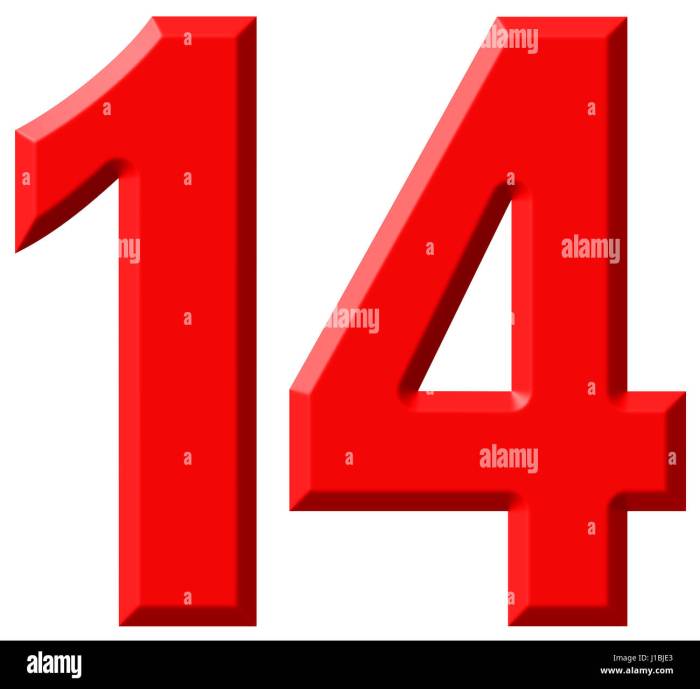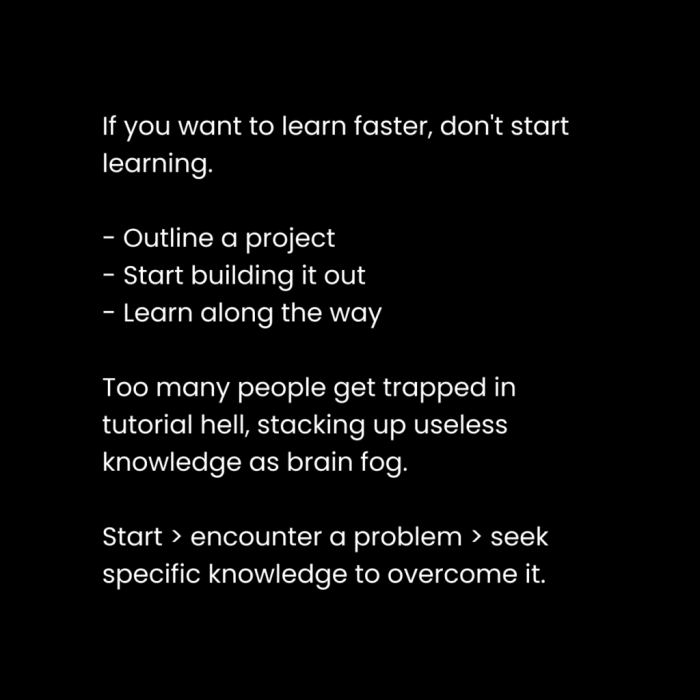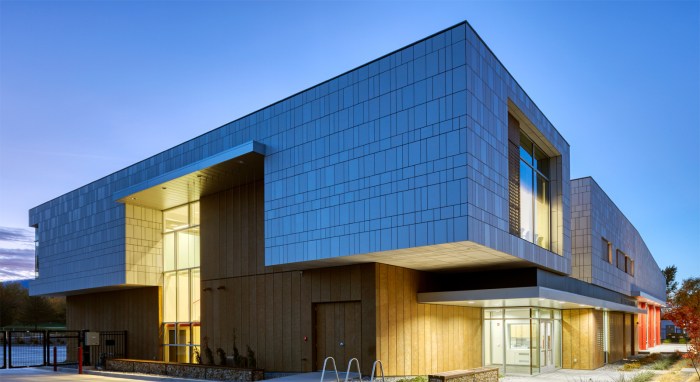7 things only visual thinkers will understand. This exploration dives deep into the unique ways visual thinkers perceive, process, and solve problems. From defining visual thinking to understanding its application across various fields, we’ll unravel the secrets behind this distinct cognitive style.
Visual thinkers often excel at tasks that involve spatial reasoning, patterns, and imagery. They see the world differently, approaching challenges with a unique perspective that can be both a strength and a source of occasional misunderstanding. This post aims to illuminate these differences, and hopefully, help bridge the gap between different thinking styles.
Defining Visual Thinking
Visual thinking is a cognitive style characterized by a preference for processing information through images, diagrams, and spatial relationships rather than words or actions. It’s a powerful tool for understanding complex concepts and problem-solving, often leading to innovative insights. This approach differs from verbal thinkers, who primarily rely on language, and kinesthetic learners, who favor hands-on experiences. Understanding these distinctions is key to appreciating the diverse ways individuals perceive and interact with the world.Visual thinkers often find it easier to grasp abstract ideas when presented visually.
This is because visual representations can make connections between disparate concepts more apparent and create a clearer mental model of the subject matter. They excel at tasks requiring spatial reasoning, pattern recognition, and the ability to manipulate mental images.
Defining Visual Thinking vs. Other Cognitive Styles
Visual thinking differs significantly from verbal and kinesthetic thinking. Verbal thinkers process information primarily through language, often relying on explanations and discussions. Kinesthetic thinkers learn best through physical interaction and hands-on activities. The table below highlights the key differences.
| Characteristic | Visual Thinking | Verbal Thinking | Kinesthetic Thinking |
|---|---|---|---|
| Primary Mode of Information Processing | Images, diagrams, spatial relationships | Language, words, explanations | Physical actions, hands-on activities |
| Preferred Learning Environments | Visual aids, diagrams, maps, graphic organizers | Discussions, lectures, reading | Workshops, experiments, role-playing |
| Strengths | Spatial reasoning, pattern recognition, creating mental models | Communication, articulation, analysis of arguments | Hands-on application, problem-solving through experimentation |
| Weaknesses | Difficulty with abstract language, potential for misinterpretation of verbal instructions | Difficulty visualizing complex concepts, potential for abstracting from practical application | Difficulty with abstract concepts, potential for neglecting theoretical aspects |
Visual Learning Characteristics
Visual learners demonstrate several key characteristics. They often prefer visual aids to enhance their understanding. They thrive in environments that provide opportunities for visual engagement.
- Strong visual memory: Visual learners often retain information better when it’s presented visually. They can recall images and diagrams more easily than verbal explanations. For example, a visual learner might remember a presentation’s flow chart better than a lengthy explanation of the same concepts.
- Preference for visual aids: They are drawn to images, diagrams, charts, and other visual representations. These tools make learning more engaging and effective for them. Consider a student who prefers looking at a map of the digestive system over reading a detailed description.
- Spatial reasoning skills: Visual learners often excel in tasks requiring spatial reasoning, such as problem-solving, design, and art. They can visualize and manipulate objects in their mind. An architect, for example, relies heavily on visualizing structures in three dimensions.
- Strong preference for visual organization: Visual learners tend to organize information in visual formats like mind maps, flowcharts, and diagrams. This visual organization enhances their understanding and memory. A student preparing for an exam might create a mind map to connect different concepts.
Visual Representations of Information
Visual learners thrive on imagery and spatial reasoning. They process information differently than auditory or kinesthetic learners, often finding abstract concepts more accessible when presented visually. This approach to learning allows them to connect ideas in a more concrete and memorable way. Visual representations of information become powerful tools for understanding, retention, and application of knowledge.Visual learners often find themselves naturally drawn to charts, diagrams, and other visual aids.
These tools allow them to grasp complex ideas quickly and intuitively, by visually mapping out the connections and relationships between different pieces of information. This method promotes a deep understanding and facilitates long-term memory storage.
Visual Processing and Retention
Visual learners process information by associating it with images and mental models. They construct internal representations of concepts in their minds, which facilitates the connection and retention of information. This internal visual representation allows for easier recall and application of knowledge. This process of visualizing information helps them create meaningful connections between new and existing knowledge. They often remember the layout and organization of information better than the words themselves.
Imagery and Spatial Reasoning in Understanding Concepts
Visual learners utilize imagery and spatial reasoning to build a mental map of the concept being learned. This allows them to visualize the relationships and connections between different parts of the concept, leading to a more profound and lasting understanding. The use of imagery and spatial reasoning helps them develop a clear understanding of the concept’s structure and function.
Visual thinkers often thrive on visuals, but even they need a strategic approach to a summer move. Knowing how to effectively visualize the entire process, from packing to unpacking, is key, and a great resource for planning a smooth transition is how handle summer move. Ultimately, visual thinkers will appreciate the ability to map out each step, making the whole experience less daunting and more manageable, allowing them to fully understand and embrace the process.
That’s just one of the many things visual thinkers relate to.
This is particularly helpful when understanding abstract concepts, as the visual representation makes them tangible and easier to grasp.
Examples of Visual Representations
Various visual representations help visual learners. Charts and graphs present data in a concise and easily digestible format. For instance, a bar graph can quickly compare different quantities, while a line graph can illustrate trends over time. Diagrams, such as flowcharts or mind maps, clarify processes and relationships. Mind maps, in particular, visually connect ideas and sub-ideas, fostering a holistic understanding.
Different Types of Visual Aids and Their Applications
| Type of Visual Aid | Description | Application |
|---|---|---|
| Bar Graphs | Represent data using bars of varying heights or lengths. | Comparing quantities, showing trends over time, and highlighting differences between categories. |
| Line Graphs | Display data points connected by lines, showing trends or patterns. | Illustrating changes in data over time, identifying correlations, and demonstrating growth or decline. |
| Flowcharts | Visual representations of processes, showing steps and their sequence. | Clarifying procedures, illustrating algorithms, and demonstrating decision-making processes. |
| Mind Maps | Hierarchical diagrams showing relationships between ideas and concepts. | Brainstorming, organizing ideas, and understanding complex topics by connecting related concepts. |
| Diagrams | Visual representations of systems, structures, or relationships. | Explaining complex systems, illustrating anatomy, showing relationships between components, and conveying structural information. |
Visual Problem Solving
Visual thinkers often approach problem-solving in a unique way, leveraging their strong spatial reasoning and mental imagery. They translate complex issues into visual representations, which helps them to identify patterns, connections, and potential solutions more readily than those who primarily rely on verbal or abstract reasoning. This visual approach allows for a more intuitive and often more efficient problem-solving process.Visual problem-solving involves more than just drawing pictures.
Ever wondered what makes visual thinkers tick? It’s fascinating how our brains process information visually. While psychologists are finding some surprising benefits of going through tough times, like building resilience and fostering creativity, psychologists find the surprising benefit going through hard times , these benefits often manifest differently for visual thinkers. Visual thinkers might see those challenges as opportunities to re-imagine and strategize in new ways, further highlighting the unique perspective that comes with this way of processing information.
So, keep an eye out for the next post on the 7 things only visual thinkers will understand!
It’s a dynamic process of transforming abstract concepts and verbal descriptions into visual models. This process can range from simple diagrams to elaborate mind maps, allowing visual thinkers to grasp the core of a problem and its intricate relationships more quickly and effectively.
Visual Representations in Problem Solving
Visual representations are key tools for visual thinkers. They enable a more comprehensive understanding of the problem’s structure and the relationships between its various components. Diagrams, charts, and spatial models are used to analyze the problem’s context, pinpoint key factors, and visualize possible solutions. This visual approach fosters a deeper understanding and enables more efficient solutions.
Examples of Visual Problem Solving
Visual thinkers frequently employ mental imagery to tackle complex problems. Imagine trying to optimize the layout of a factory floor. A visual thinker might mentally rotate different machine placements, visualize material flow, and estimate travel times. This mental visualization helps identify bottlenecks and inefficiencies that a purely verbal or analytical approach might miss. Another example is urban planning.
Visualizing different traffic flow scenarios, identifying potential congestion points, and assessing the impact on existing infrastructure are all visual problem-solving techniques.
Converting Verbal Problems to Visual Representations
Converting verbal problems into visual representations is a crucial step in the visual problem-solving process. Consider a classic word problem: “A train leaves station A at 8:00 AM traveling at 60 mph. Another train leaves station B at 9:00 AM traveling at 70 mph. The stations are 300 miles apart. At what time will the trains meet?”To visualize this problem, a visual thinker might draw a simple diagram.
The diagram would include two lines representing the train’s paths, labeled with their respective speeds and starting times. Visualizing the trains’ relative positions over time allows for a clear understanding of when they will collide. The visual representation makes the calculation of the meeting point and time straightforward. The visual representation would allow the thinker to visualize the train’s relative positions, their speeds, and how those factors affect their travel times and meeting point.
Visual Communication
Visual thinkers often rely on visual representations to convey complex ideas and concepts more effectively than traditional verbal explanations. This preference for visual communication stems from their ability to process information in a spatial and relational manner, making visual aids crucial for expressing their understanding. This approach transcends simple illustrations; it’s a powerful tool for clarifying intricate connections and facilitating comprehension.Visual communication, in its broadest sense, encompasses any method that uses visual elements to transmit information.
This includes everything from simple diagrams and charts to elaborate infographics and animations. Visual communication isn’t just about making things look pretty; it’s a deliberate process of choosing the most appropriate visual language to convey a specific message to a particular audience.
Methods of Visual Communication
Visual communication methods are diverse, catering to various needs and preferences. They extend far beyond static images.
- Diagrams and Charts: Diagrams and charts effectively represent data, processes, and relationships. Flowcharts, for instance, visually illustrate steps in a procedure, making them easily understandable. Bar charts and pie charts effectively display numerical comparisons and distributions. Their effectiveness hinges on clear labeling and appropriate use of colors and shapes.
- Infographics: Infographics condense large amounts of complex information into visually engaging presentations. They combine various visual elements—charts, diagrams, icons, and text—to highlight key insights and trends. Their effectiveness relies on a balance between visual appeal and clarity of information. They are particularly useful for presenting statistical data in a comprehensible way.
- Illustrations and Images: Illustrations and images can convey emotional and contextual information. Photographs, drawings, and sketches provide a concrete representation of ideas, objects, or concepts. The choice of illustration or image depends heavily on the intended message and audience.
- Animations and Videos: Animations and videos offer dynamic ways to convey information and processes. They bring abstract concepts to life through motion and can demonstrate complex ideas or procedures in an easily digestible format. They are especially useful in complex simulations and training materials.
Strengths of Visual Communication
Visual communication offers several advantages over purely verbal methods.
- Improved Comprehension: Visual aids can significantly enhance understanding, especially when dealing with intricate concepts. They provide a different perspective, allowing the brain to process information in a more holistic and intuitive way.
- Increased Engagement: Visual elements make communication more engaging and interesting, capturing attention and maintaining interest. This active engagement can lead to better retention of information.
- Enhanced Retention: Visual representations often lead to better memory recall than purely textual information. This is because visual information is processed in a different part of the brain, strengthening memory pathways.
- Cross-Cultural Communication: Visuals can bridge communication gaps across cultures, as they often rely on universal symbols and representations.
Weaknesses of Visual Communication, 7 things only visual thinkers will understand
Visual communication, while powerful, has limitations.
- Potential for Misinterpretation: Visuals, if not carefully designed, can be misinterpreted. Ambiguous images or poorly chosen visuals can lead to confusion or inaccurate understanding.
- Oversimplification: Visuals, in an effort to simplify complex information, can sometimes oversimplify and lose crucial details.
- Time and Resources: Creating effective visual aids can be time-consuming and require specific skills and resources. Designing compelling and informative visuals takes time and effort, potentially increasing project costs.
- Dependence on Context: The effectiveness of visual communication often depends on the context in which it is presented. An effective visual in one situation may not be as effective in another.
Visual Communication Tools and Techniques
Different tools and techniques facilitate visual communication.
| Tool/Technique | Description | Example |
|---|---|---|
| Flowcharts | Visual representation of processes or steps. | Illustrating the steps involved in a manufacturing process. |
| Mind Maps | Visual representation of ideas and connections. | Brainstorming ideas related to a specific topic. |
| Charts (bar, pie, line) | Visual representation of numerical data. | Displaying sales figures across different quarters. |
| Infographics | Visual representation of complex information. | Summarizing research findings or statistical data in an accessible way. |
| Icons | Symbolic representations of ideas or objects. | Representing a social media platform with a specific icon. |
Visual Learning Environments
Visual learning environments are more than just pretty pictures and colorful charts. They are meticulously crafted spaces designed to foster understanding and engagement for visual learners. These environments capitalize on the strengths of visual thinkers, allowing them to process information effectively and connect concepts through visual representations. A well-designed visual learning environment transforms the act of learning into a dynamic and enriching experience.Visual learning environments aren’t just about aesthetics; they’re about creating an atmosphere conducive to visual thinking.
By incorporating various visual aids, these environments help learners actively construct knowledge through observation, analysis, and synthesis of visual information. This approach supports deeper comprehension and retention compared to traditional methods. The effectiveness of visual aids is particularly pronounced for visual learners, who often find abstract concepts easier to grasp when presented visually.
Ideal Visual Learning Environments
A truly ideal visual learning environment seamlessly integrates visual elements into every aspect of the learning process. It’s more than just a classroom decorated with posters; it’s a dynamic space where visual thinking is actively encouraged and supported. It’s an environment that anticipates the needs of visual learners, recognizing their preference for visual representations of information and their aptitude for connecting ideas through visual pathways.
Elements of a Supportive Visual Learning Environment
Visual learning environments are not static; they are dynamic spaces that respond to the needs of the learners. These environments are crucial for fostering a culture of visual thinking and problem-solving. The following elements contribute to creating a supportive visual learning environment:
- Organization and Spatial Arrangement: The physical layout of the space is key. Clear, visually distinct areas for different activities, such as collaborative workspaces, individual study nooks, and presentation zones, allow visual learners to process information in an organized manner. Well-organized spaces reduce visual clutter and enhance focus.
- Visual Displays and Exhibits: The incorporation of visually engaging displays, such as interactive whiteboards, graphic organizers, and mind maps, fosters a culture of visual learning. These displays provide readily accessible visual representations of concepts and encourage visual exploration.
- Visual Aids and Resources: A wide range of visual aids, including diagrams, charts, graphs, and photographs, should be readily available to learners. This supports their understanding of complex information by providing alternative visual representations.
- Technology Integration: Visual learning environments should leverage technology to enhance the learning experience. Digital tools, like interactive simulations, virtual reality applications, and multimedia presentations, create engaging and immersive visual learning opportunities.
- Emphasis on Visual Communication: Visual learners thrive in environments where visual communication is valued and encouraged. This includes opportunities for creating visual presentations, drawing, and sketching, allowing learners to express their understanding through visual means.
- Flexible and Adaptable Spaces: The ability to adapt the learning space for various activities is crucial. Visual learners often benefit from flexible seating arrangements and adjustable lighting, which can cater to their individual needs and preferences.
- Collaborative Learning Spaces: Encouraging collaborative learning, where learners can work together to create visual representations and solve problems using visual strategies, promotes active engagement and knowledge sharing. These spaces can include interactive whiteboards, visual collaboration tools, and designated areas for group projects.
Visual Thinking in Different Fields

Visual thinking transcends the realm of art and design; it’s a powerful tool applicable across numerous professional fields. By translating abstract concepts into visual representations, professionals can enhance understanding, facilitate communication, and ultimately drive innovation and problem-solving. This approach isn’t limited to creative endeavors; its practical applications are increasingly recognized in various industries, from engineering to healthcare.Visual thinking provides a framework for clearer communication and problem-solving.
Ever wondered what makes visual thinkers tick? It’s those 7 unique ways of seeing the world. But sometimes, even visual thinkers need a little help navigating the digital landscape. Luckily, 16 smart Google search tricks that will make life easier can be a real game-changer, allowing you to quickly find the information you need, whether it’s a specific image or a complex concept.
16 smart google search tricks that will make life easier Ultimately, these tricks help visual thinkers visualize information in a more effective way, which brings us back to the core of how we process information visually. These visual thinking techniques are often the secret sauce to unlocking innovative ideas.
It enables individuals to conceptualize complex ideas, facilitating collaboration and decision-making. From brainstorming sessions to intricate technical diagrams, visual thinking is a crucial asset in diverse professional settings.
Visual Thinking in Design
Designers, whether graphic, product, or interior, rely heavily on visual thinking. Sketching, mood boards, and wireframes are fundamental tools in the design process. These visual aids allow designers to explore concepts, communicate ideas to clients, and refine designs iteratively. The ability to visualize a product’s form, functionality, and aesthetic appeal is critical for a successful design. A designer’s visual thinking allows them to envision the final product before its physical manifestation.
Visual Thinking in Architecture
Architects employ visual thinking to conceptualize buildings, visualize spatial relationships, and communicate design intent to clients and contractors. 3D models, blueprints, and renderings are crucial for conveying complex architectural ideas. Visual representations of the proposed structure allow stakeholders to grasp the overall design, understand its functionality, and appreciate its aesthetic qualities. The ability to “see” the building in its entirety before construction is paramount in architectural practice.
Visual Thinking in Engineering
Engineers leverage visual thinking for problem-solving and design. Flowcharts, diagrams, and schematics are vital for understanding systems and processes. Visual representations of mechanical components and their interactions enable engineers to identify potential issues and design effective solutions. Engineers translate complex technical information into comprehensible visual representations. This facilitates collaboration among team members and clarity of design.
For example, an electrical engineer might use a circuit diagram to visualize the flow of current, or a mechanical engineer might use a CAD model to represent the mechanics of a machine.
Visual Thinking in Other Disciplines
Visual thinking is not confined to design, architecture, and engineering. In fields like medicine, scientific research, and business analysis, visual representations of data and information are critical for understanding patterns, identifying trends, and communicating insights.
Visual Thinking Applications Across Industries
| Industry | Visual Thinking Application | Example |
|---|---|---|
| Design | Sketching, mood boards, wireframes, prototypes | Creating a visual representation of a website layout before development |
| Architecture | 3D models, blueprints, renderings | Creating a 3D model of a building to visualize its form and spatial relationships |
| Engineering | Flowcharts, diagrams, schematics, CAD models | Creating a flowchart to represent the steps in a manufacturing process |
| Healthcare | Patient charts, medical imaging, anatomical diagrams | Using X-rays to visually diagnose a fracture |
| Business Analysis | Data visualizations, flowcharts, process maps | Creating a flowchart to represent the steps in a business process |
The Visual Thinker’s Perspective: 7 Things Only Visual Thinkers Will Understand
Visual thinkers experience the world through a unique lens, processing information primarily through images, patterns, and spatial relationships. Their understanding isn’t confined to the literal; they often perceive deeper meaning and connections within visual representations. This approach to thought differs from those who favor linguistic or logical methods.Visual thinkers often find it easier to grasp complex ideas when presented visually.
They can mentally “see” the connections between concepts, making the learning and problem-solving processes more intuitive. This perspective can lead to innovative solutions and a unique approach to communication.
Experiencing the World Visually
Visual thinkers often perceive the world in vivid imagery. They don’t just see objects; they see relationships between them, spatial arrangements, and dynamic changes. This is not merely a matter of seeing; it’s about understanding the underlying structure and function of the world around them. Their internal representations are often rich with details and colors.
Thought Processes of Visual Thinkers
Visual thinkers process information by constructing mental images and diagrams. They might mentally “draw” connections between concepts, visualize problem scenarios, or “see” potential solutions. This internal visualization allows them to grasp the essence of an idea rapidly and intuitively. They are often more comfortable working with tangible objects or creating visual representations. The process often involves a strong spatial awareness and a tendency to think in terms of relationships and patterns.
Visual Perception and Interpretation
Visual thinkers perceive and interpret information in ways that may seem unconventional to others. They often identify patterns and connections that others might miss. They might “see” the solution to a problem in a visual form before understanding it logically.
Examples of Visual Thinking
Visual thinkers excel in various fields, from design and art to engineering and science. Consider an architect visualizing a building’s layout before sketching it. A scientist might create a flow chart to understand a complex chemical reaction. An artist might “see” a composition in their mind before painting it. These are just a few examples of how visual thinkers translate ideas into tangible or mental images.
Common Challenges and Misunderstandings
Visual thinkers may face challenges when communicating ideas that aren’t easily visualized. They might struggle to explain their thinking process to those who rely on linguistic or logical methods. Conversely, others may misunderstand or underestimate the depth of their thought processes. A common misconception is that visual thinkers are simply creative; they can be highly analytical and logical, but their approach to analysis is different.
Sometimes, a visual thinker might get lost in the details of the visual representation, potentially overlooking the overall concept or solution.
Overcoming Challenges
To overcome these challenges, visual thinkers can learn to articulate their visual thinking processes through diagrams, sketches, or other visual aids. They can also learn to translate their mental images into clear, concise language. Developing effective communication strategies that involve visual aids is crucial for bridging the gap between visual and non-visual thinkers.
Visual Thinking and Creativity
Visual thinking isn’t just about seeing; it’s a powerful catalyst for creativity and innovation. By translating abstract concepts into visual representations, individuals can unlock new perspectives, generate fresh ideas, and approach problems from unconventional angles. This visual language fosters a deeper understanding, enabling the exploration of possibilities that might remain hidden in purely verbal or textual formats. The act of visualizing can spark connections and associations that lead to breakthroughs in various fields.Visual thinking acts as a powerful tool for stimulating creativity and innovation.
By externalizing thoughts and ideas into visual formats, individuals can see patterns, connections, and potential solutions that might otherwise remain hidden. This process allows for a more holistic and comprehensive approach to problem-solving, leading to innovative solutions.
Visual Thinking and Idea Generation
Visual representations are highly effective in stimulating brainstorming and idea generation. Using diagrams, mind maps, and other visual tools, individuals can rapidly explore diverse possibilities and generate a wide range of ideas. This visual exploration often leads to unexpected connections and insights that verbal brainstorming might miss. Visual brainstorming can be a highly effective technique for generating a multitude of ideas in a short period.
Examples of Creative Solutions
Visual thinking has been instrumental in developing creative solutions across numerous fields. For instance, in architecture, architects use 3D models and renderings to visualize and explore design options before physical construction begins. Similarly, engineers employ flowcharts and diagrams to illustrate the intricate workings of complex systems, which often leads to innovative solutions and improved efficiency. In marketing, visual representations of target demographics and consumer behaviors help companies tailor their campaigns and create more effective strategies.
Moreover, in software development, the use of wireframes and prototypes enables developers to visually represent and refine user interfaces before implementing the final product.
Improving Creative Problem-Solving
Visual thinking significantly enhances the creative problem-solving process. It allows for a more intuitive and holistic approach, enabling individuals to visualize and understand the problem’s nuances and potential solutions. Visual tools facilitate a more intuitive and interconnected understanding of the problem, encouraging innovative solutions.
| Aspect | How Visual Thinking Improves Creative Problem Solving |
|---|---|
| Problem Definition | Visualizing the problem in different ways (diagrams, flowcharts) helps identify underlying causes, relationships, and potential constraints. |
| Idea Generation | Visual aids like mind maps and concept sketches stimulate a wider range of ideas by connecting seemingly disparate concepts. |
| Solution Evaluation | Visualizing potential solutions (e.g., prototypes, mockups) allows for quicker assessment of their feasibility, effectiveness, and impact. |
| Communication | Visual representations (e.g., diagrams, infographics) make complex information more accessible and understandable to others, fostering collaboration and feedback. |
| Implementation | Visual plans and diagrams provide a clear roadmap for implementation, reducing ambiguity and improving the execution process. |
End of Discussion

In conclusion, visual thinkers possess a powerful way of understanding and interacting with the world. This unique approach, characterized by imagery and spatial reasoning, allows for innovative problem-solving and creative expression. While their methods might differ from those of other thinkers, appreciating and understanding these differences can foster better communication and collaboration in various contexts. Hopefully, this post sheds light on the world through a visual lens.











